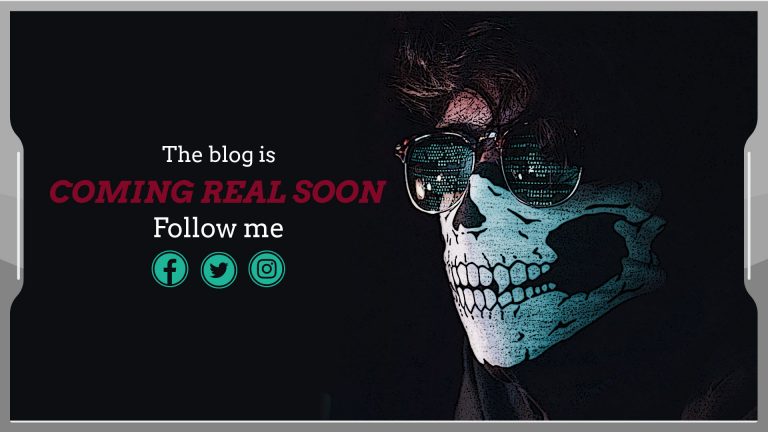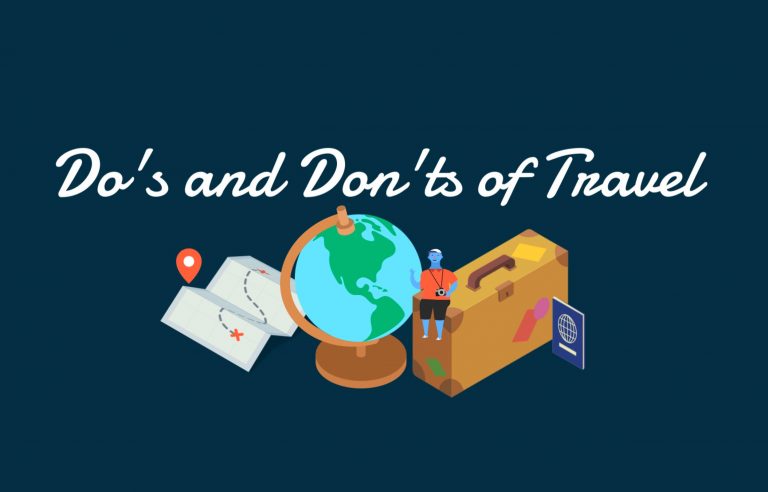Zombie Bunny is Reader-supported and may earn an affiliate commission through links on our site.
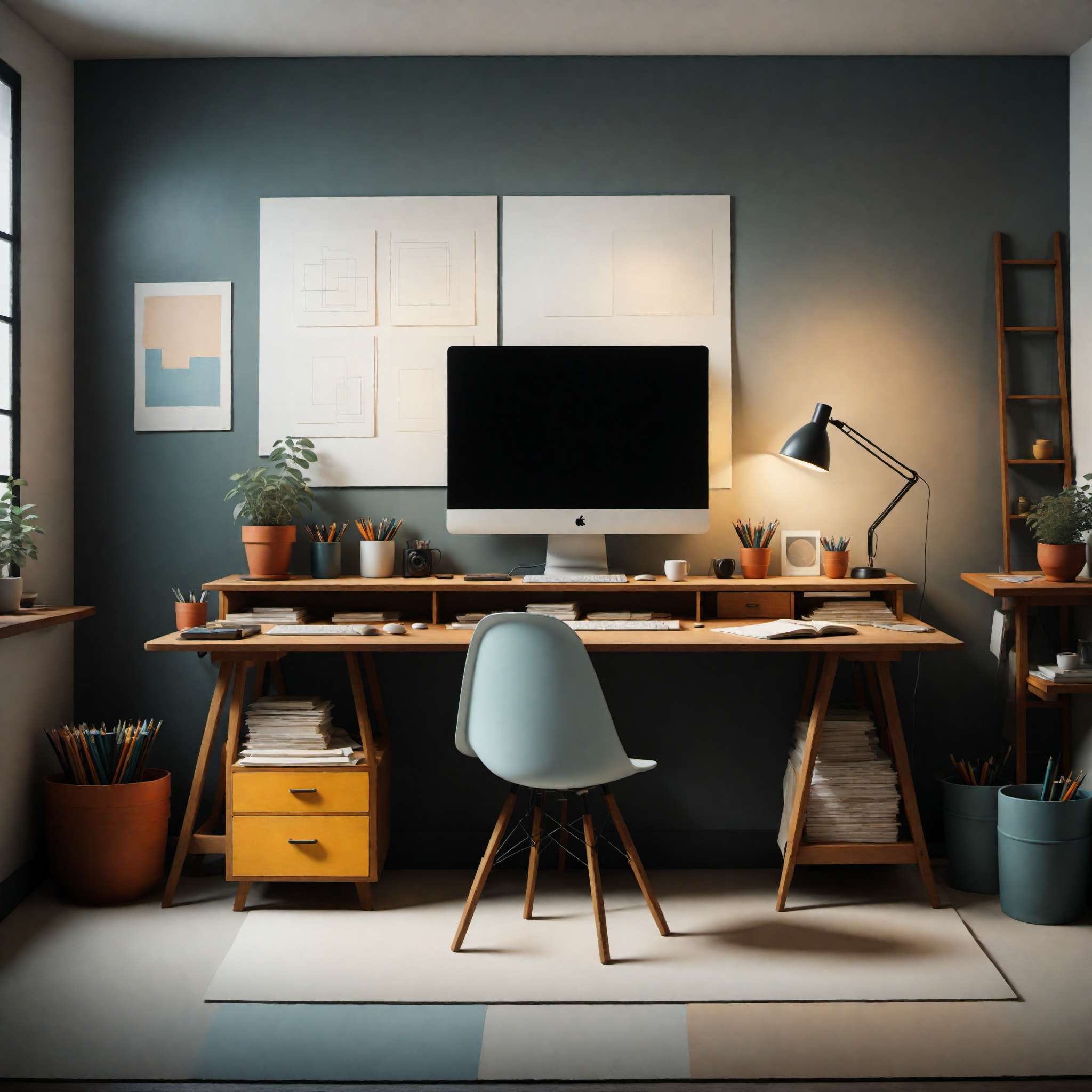
The Minimalist Worker: Simplifying Your Work for a Balanced Life
Discover how adopting minimalism can revolutionize your work life, boost productivity, and achieve a healthy work-life balance in this comprehensive guide.
In this comprehensive guide to becoming a minimalist worker, we delve into the principles of minimalism and how they can be applied to revolutionize your work life – boosting productivity, reducing stress, and achieving a healthier work-life balance. We explore practical tips on decluttering your workspace, adopting minimalist work habits, and utilizing technology effectively. We also share inspirational stories of successful minimalist workers, demonstrating the transformative power of simplicity, focus, and value in the professional sphere. Embrace minimalism in your work life and experience enhanced productivity, reduced stress, and a more balanced and fulfilling work life.
Introduction: Embrace Minimalism in Your Work Life
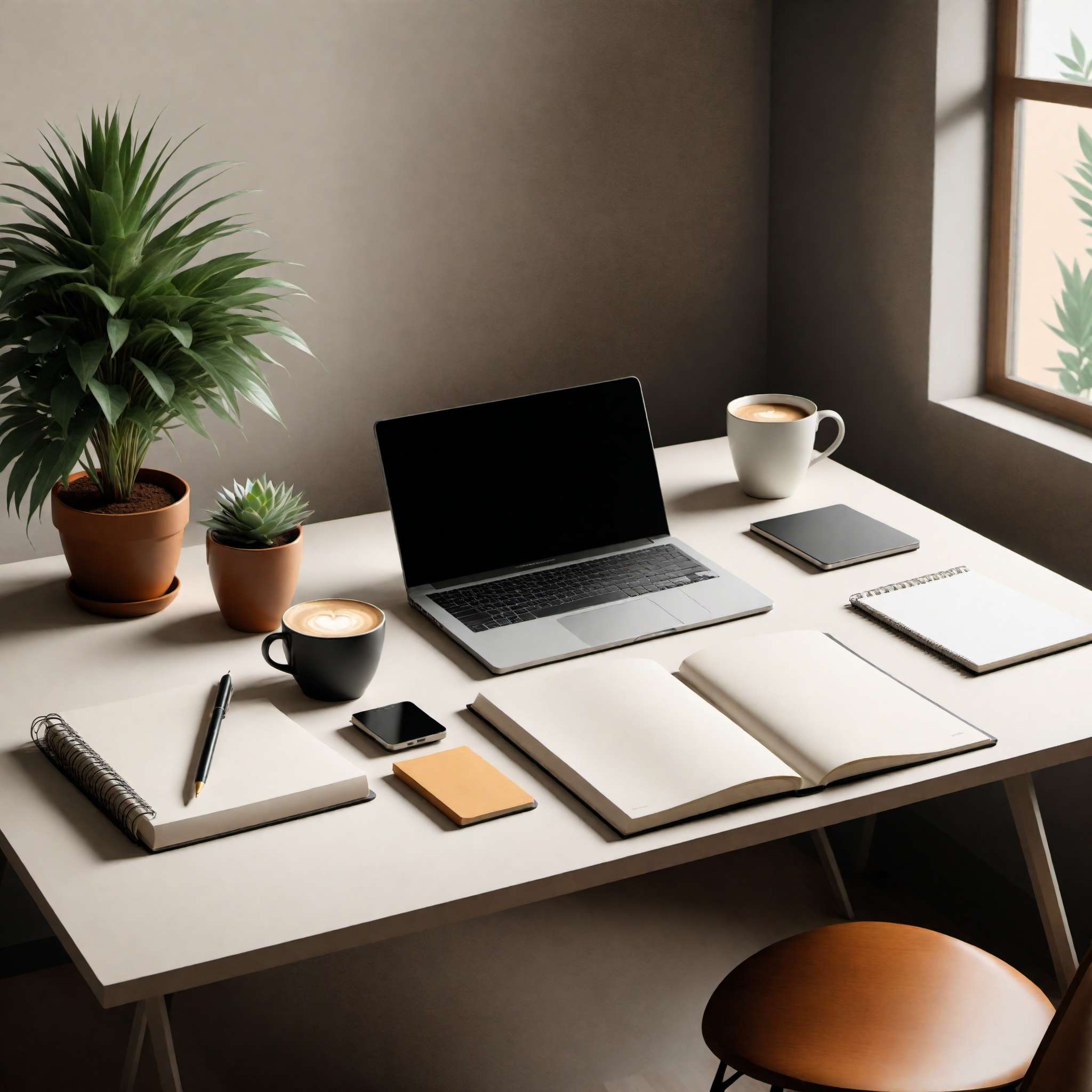
© Copyright , ZombieBunny.Org
Defining the minimalist worker
A minimalist worker is an individual who embodies the principles of minimalism in their professional life. They understand that less is more when it comes to their workspace, tools, and even their work habits. They prioritize quality over quantity, focusing on tasks that generate the most significant impact rather than juggling multiple tasks with minimal outcomes. By doing so, they not only boost their productivity but also reduce stress, leading to a healthier work-life balance.
Adopting minimalism at work doesn’t mean getting rid of everything at your desk or working fewer hours. It’s about eliminating the unnecessary—be it physical clutter on your desk, digital clutter on your devices, or mental clutter in your mind. The minimalist worker seeks to simplify their work, streamline their tasks, and create a serene, distraction-free work environment that promotes focus and efficiency. By embracing minimalism, the worker is able to achieve more with less, resulting in a more balanced and fulfilling work life.
The need for balance in work life
In today’s fast-paced and high-stress work environment, achieving a balanced work-life is more critical than ever. We often find ourselves trapped in a cycle of endless tasks, meetings, and emails, leaving little time for personal life or relaxation. This imbalance can lead to burnout, decreased productivity, and a decline in overall well-being. Hence, it’s crucial to strike a balance between our professional and personal lives, and the minimalist worker concept can play a significant role in this.
Embracing minimalism in your work life is about making conscious decisions to focus on what truly matters. It’s about reducing the noise and distractions that often cloud our judgment and productivity. By adopting a minimalist approach, you can prioritize your tasks effectively, reduce stress, increase efficiency, and create space for activities that enhance your well-being and quality of life outside work. A balanced work-life not only boosts your productivity but also leads to increased job satisfaction, improved mental health, and a more fulfilling life. The minimalist worker understands this need for balance and strives to achieve it through the principles of minimalism.
Introduction to the blog post
Welcome to our exploration of the minimalist worker, where we delve into how minimalism can revolutionize your work life. In this blog post, we aim to shed light on the concept of the minimalist worker, demonstrating how you can simplify your work, boost productivity, and achieve a balanced work-life. We will explore the principles of minimalism, the impact of your work environment on productivity, and the steps towards adopting a minimalist approach at work.
This comprehensive guide is designed to provide you with the necessary tools and insights to become a minimalist worker. We will share practical tips on decluttering your workspace, adopting minimalist work habits, and utilizing technology to enhance your minimalist work life. Furthermore, we will delve into cultivating a minimalist mindset, achieving work-life balance, and learning from successful minimalist workers. This journey towards becoming a minimalist worker is not about doing less, but about doing more of what matters, leading to a more balanced and fulfilling work-life. So, let’s embark on this exciting journey towards simplicity, productivity, and balance in your professional life.
Understanding the Concept of Minimalism

© Copyright , ZombieBunny.Org
The philosophy of minimalism
Minimalism, as a philosophy, is the practice of reducing one’s possessions or activities to the essentials, eliminating excess and focusing on things that add value to life. It’s about adopting an approach of ‘less is more’, where you strip away the non-essentials to make room for what truly matters. This principle does not merely apply to physical objects but extends to thoughts, relationships, activities, and even work.
In the context of work, minimalism means streamlining your tasks, decluttering your workspace, and focusing on tasks that yield the highest impact. It’s about reducing distractions, eliminating unnecessary tasks, and optimizing your work process for efficiency and productivity. The minimalist worker understands that by doing less, they can achieve more. They focus on meaningful work that aligns with their goals and contributes to their growth, rather than getting caught up in a whirlwind of meaningless tasks. By adopting minimalism in your work life, you can enhance your focus, increase your productivity, and improve your work-life balance. It’s about working smarter, not harder, and achieving more with less.
Application of minimalism in various life sectors
Minimalism is a versatile philosophy that can be applied in various sectors of life, not just at work. In your personal life, it might mean decluttering your home, simplifying your wardrobe, or reducing the number of commitments in your social calendar. In your financial life, it might involve cutting unnecessary expenses, creating a simple and effective budget, or adopting a more mindful approach to spending and saving.
In your digital life, minimalism can be applied by decluttering your digital space, unsubscribing from unnecessary emails, or limiting your time spent on social media. In your health and wellness realm, it might mean simplifying your diet, focusing on a few effective exercises, or practicing mindfulness to declutter your mind.
The beauty of minimalism lies in its flexibility. It can be tailored to suit your unique needs and preferences, and it can be as comprehensive or as specific as you want it to be. Regardless of how you choose to apply it, the end goal remains the same – to simplify, to focus on what’s essential, and to create space for what truly adds value to your life. By applying minimalism across various sectors of your life, including your work, you can experience a greater sense of control, clarity, and peace.
Benefits of adopting minimalism
Adopting minimalism in your work life offers numerous benefits that can significantly enhance your productivity, well-being, and overall job satisfaction. First and foremost, minimalism helps you declutter your workspace, both physically and digitally, creating an environment that promotes focus and efficiency. A clean, clutter-free workspace reduces distractions, helping you concentrate better on your tasks.
Minimalism also helps streamline your work processes, allowing you to focus on the tasks that have the most significant impact. By eliminating unnecessary tasks and distractions, you can increase your productivity and achieve more in less time. This not only enhances your efficiency but also allows you to maintain a better work-life balance.
Moreover, adopting a minimalist mindset can reduce stress and anxiety associated with a heavy workload or a chaotic work environment. It encourages you to set clear priorities, manage your time effectively, and create boundaries that prevent work from encroaching on your personal life.
Lastly, minimalism fosters a sense of control and satisfaction. By taking charge of your work life, decluttering your tasks, and focusing on what truly matters, you gain a sense of accomplishment and peace. These benefits, combined, make a compelling case for adopting minimalism in your work life, paving the way for a more balanced, productive, and fulfilling professional journey.
The Impact of Work Environment on Productivity
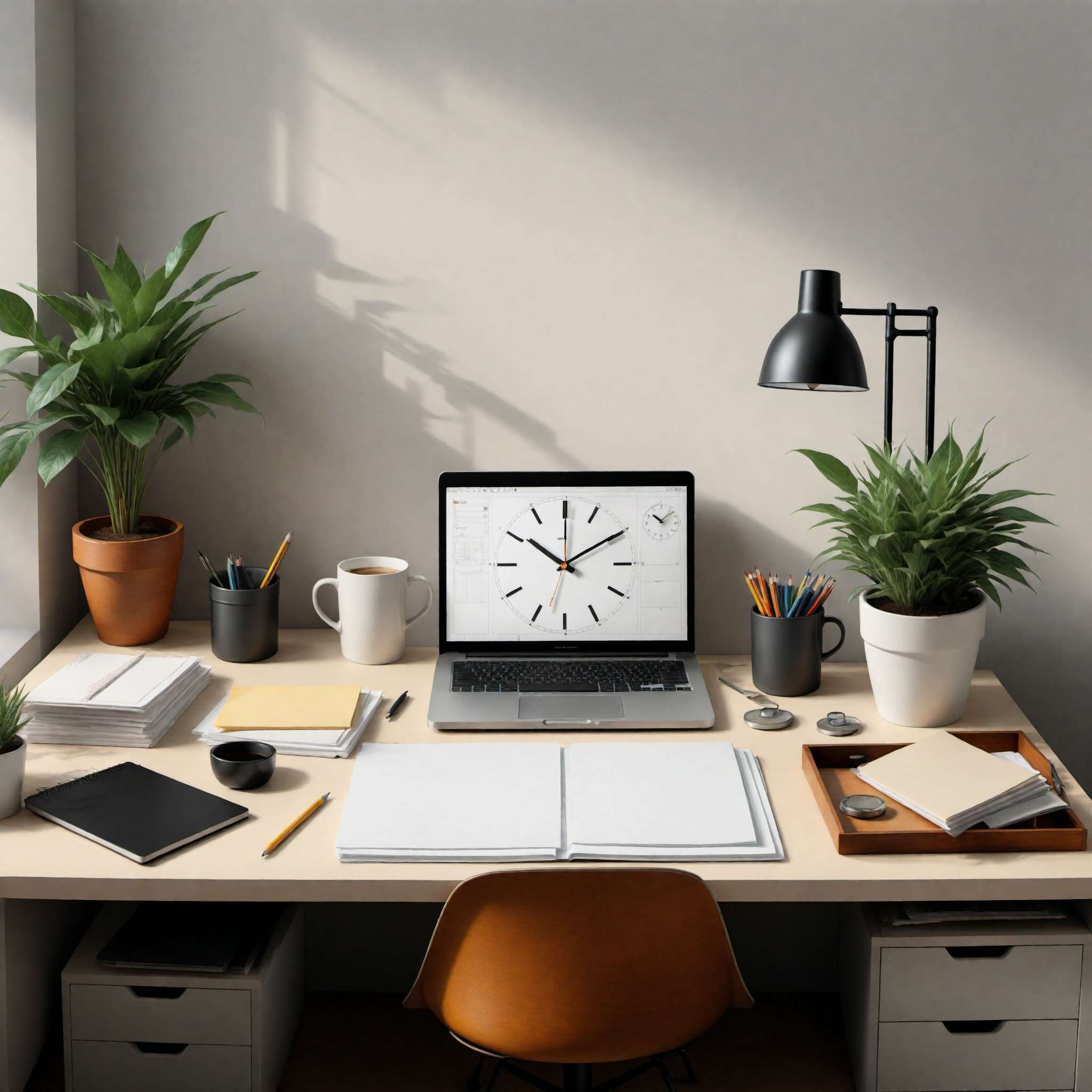
© Copyright , ZombieBunny.Org
The importance of a conducive work environment
A conducive work environment plays a pivotal role in determining your productivity, efficiency, and overall job satisfaction. It’s not just about the physical elements such as the office layout or desk organization, but also about the psychological aspects like the level of noise, the amount of clutter, or the work culture. A well-organized, clutter-free, and peaceful work environment can significantly enhance your focus, creativity, and efficiency.
A conducive work environment minimizes distractions, allowing you to concentrate better on your tasks. It promotes a sense of calm and order, reducing the stress and anxiety that often come with a chaotic workspace. When your workspace is organized and free from unnecessary clutter, you spend less time searching for things or getting distracted, and more time accomplishing your tasks.
Moreover, a conducive work environment reflects and reinforces your professional identity. It creates a space where you can focus on your work, free from the distractions of home or the outside world. It also sends a message about your professionalism and commitment to your work.
For the minimalist worker, creating a conducive work environment is a crucial part of their journey towards productivity and work-life balance. By creating a workspace that supports their goals, they’re able to work more efficiently, maintain focus, and enhance their performance.
How clutter affects work performance
Clutter, both physical and digital, can have a significant impact on your work performance. A cluttered workspace can lead to distractions, making it difficult for you to focus on your tasks. It can cause stress and anxiety, reduce your efficiency, and even affect your creativity and problem-solving skills. When your workspace is cluttered, you spend more time looking for things, less time working, and your productivity suffers as a result.
In addition to physical clutter, digital clutter can also affect your work performance. A cluttered inbox, a messy desktop, or a disorganized file system can make it challenging to find the information you need, leading to frustration and wasted time. It can also lead to information overload, causing stress and reducing your ability to concentrate.
For the minimalist worker, eliminating clutter is a key aspect of enhancing productivity. It’s about creating a serene, distraction-free work environment that promotes focus and efficiency. By decluttering your workspace and your digital environment, you can reduce distractions, save time, and create a more conducive work environment. This not only enhances your work performance but also contributes to a healthier and more balanced work life.
Optimizing your workspace for productivity
Optimizing your workspace for productivity involves creating a space that supports your work habits, promotes efficiency, and reduces distractions. For the minimalist worker, this means adopting a less-is-more approach to their workspace. It’s about creating a clutter-free environment where everything has a purpose and a place.
Start with decluttering your workspace. Remove non-essential items, organize your tools, and create a clean, open space that encourages focus and productivity. Keep only the items that you use regularly within reach, and store the rest in an organized manner.
Next, consider your comfort and ergonomics. Ensure that your chair and desk are at the right height, your lighting is adequate, and your computer screen is at eye level. These factors can have a significant impact on your productivity and well-being.
Don’t forget about your digital workspace. Organize your files, declutter your inbox, and use productivity tools to streamline your tasks. A clean and organized digital workspace can help you find information faster, reduce distractions, and improve your productivity.
Lastly, personalize your workspace in a way that inspires and motivates you. This could be a plant, a piece of art, or a photo that brings you joy. However, keep it minimal to maintain a clutter-free environment.
By optimizing your workspace for productivity, you can create a conducive environment that supports your minimalist work life and enhances your work performance.
Decluttering: The First Step to Minimalism at Work
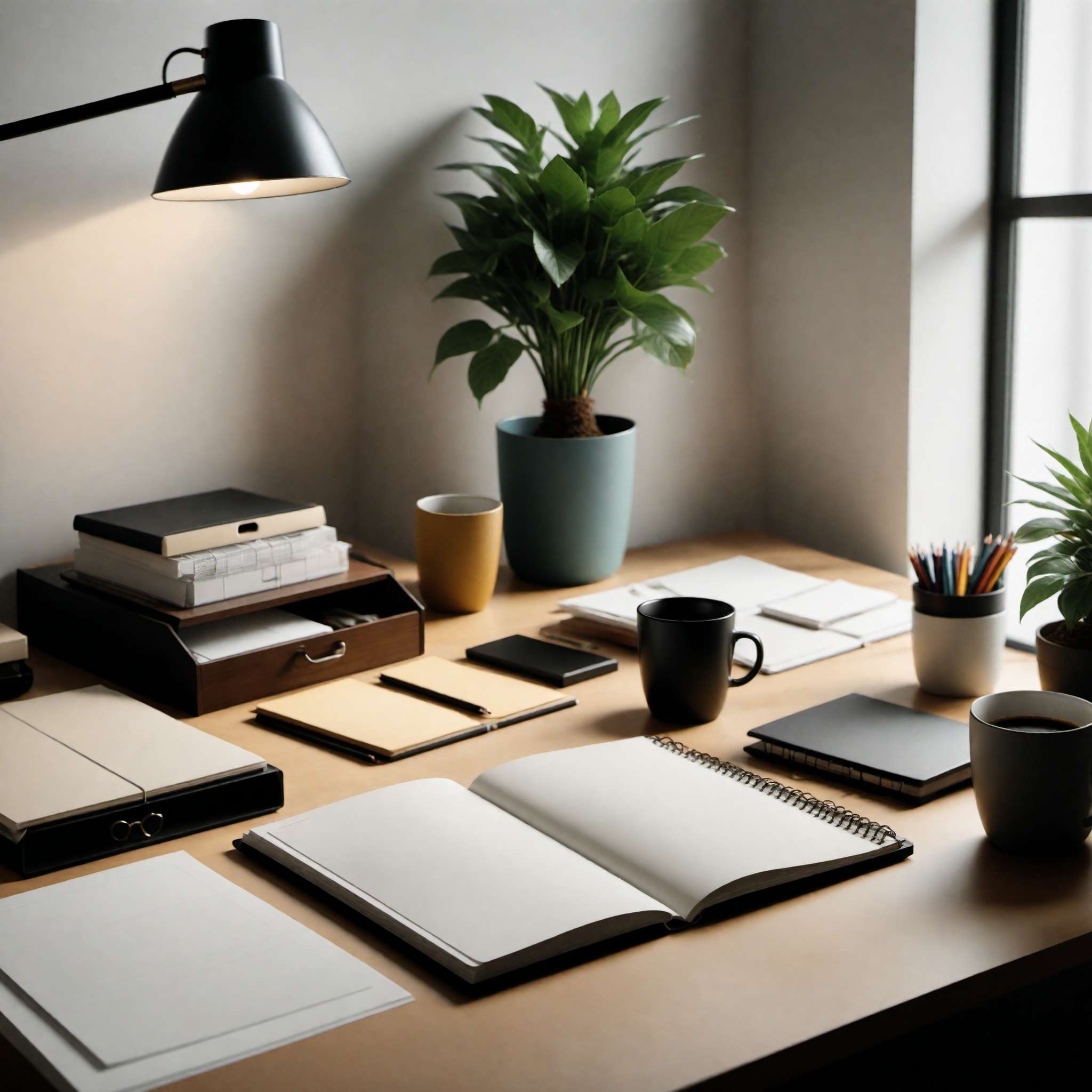
© Copyright , ZombieBunny.Org
How to declutter your workspace
Decluttering your workspace is a crucial first step towards becoming a minimalist worker. It involves getting rid of the unnecessary items that take up space and create distractions. Here’s a simple guide on how to declutter your workspace.
Start by removing everything from your desk. This gives you a clean slate to work with. Next, go through each item and decide whether it’s essential for your work. Ask yourself: “Do I use this regularly? Does it support my work? Does it add value to my workspace?” If the answer is no, it’s probably clutter.
Once you’ve identified the essential items, find a place for each of them on your desk. Keep the most frequently used items within easy reach. The less frequently used items can be stored away but still accessible when needed.
Don’t forget about your digital workspace. Review your files, emails, and apps. Delete unnecessary files, archive old emails, and uninstall apps that you no longer use. Organize your files into clearly labeled folders for easy access.
Finally, make it a habit to clean your desk at the end of each day. This ensures that you start each day with a clean, clutter-free workspace.
By decluttering your workspace, you create a work environment that promotes focus, efficiency, and productivity. It’s the first step towards embracing a minimalist work life.
The role of decluttering in productivity enhancement
Decluttering plays a significant role in enhancing productivity. A cluttered workspace can be distracting and stressful, making it difficult to focus and complete tasks efficiently. On the other hand, a clean, organized workspace can help improve your focus, increase your efficiency, and reduce stress.
When your workspace is clutter-free, you spend less time looking for things and more time accomplishing your tasks. It’s easier to stay organized, keep track of your tasks, and manage your time effectively. Consequently, your productivity improves, and you’re able to achieve more in less time.
Decluttering also has psychological benefits. It can help reduce anxiety, increase your sense of control, and create a calmer, more peaceful work environment. It can also boost your creativity and problem-solving skills by creating a space that stimulates your mind rather than distracting it.
Moreover, decluttering can help improve your work-life balance. By keeping your workspace organized, you’re able to finish your tasks more efficiently, leaving more time for your personal life.
For the minimalist worker, decluttering is not a one-time task but an ongoing process. It’s about maintaining a clutter-free workspace that supports your productivity and well-being. By embracing decluttering, you’re taking a significant step towards enhancing your productivity and embracing a minimalist work life.
Maintaining a clutter-free workspace
Maintaining a clutter-free workspace is an ongoing process that requires discipline and consistency. It’s not just about creating an organized workspace, but also about keeping it that way. Here are some tips to help you maintain a clean, clutter-free workspace.
First, make it a habit to clean your desk at the end of each day. This ensures that you start each day with a clean slate, setting the tone for a productive day. It also prevents the accumulation of clutter over time.
Second, adopt the “one in, one out” rule. Whenever you bring a new item into your workspace, remove an old one. This helps keep your workspace clutter-free and ensures that everything in your space serves a purpose.
Third, utilize storage solutions. Use drawers, shelves, and organizers to keep your items neat and organized. This helps keep your desk clear while still keeping your items accessible.
Fourth, go paperless where possible. Utilize digital tools to reduce paper clutter on your desk. If you must keep paper documents, file them away neatly.
Finally, schedule regular decluttering sessions. Even with the best habits, it’s easy for clutter to pile up over time. Regular decluttering sessions ensure that your workspace stays clean and organized.
By maintaining a clutter-free workspace, you create a conducive environment that supports your productivity and well-being. It’s a key aspect of the minimalist worker’s journey towards a balanced work life.
Adopting Minimalist Work Habits
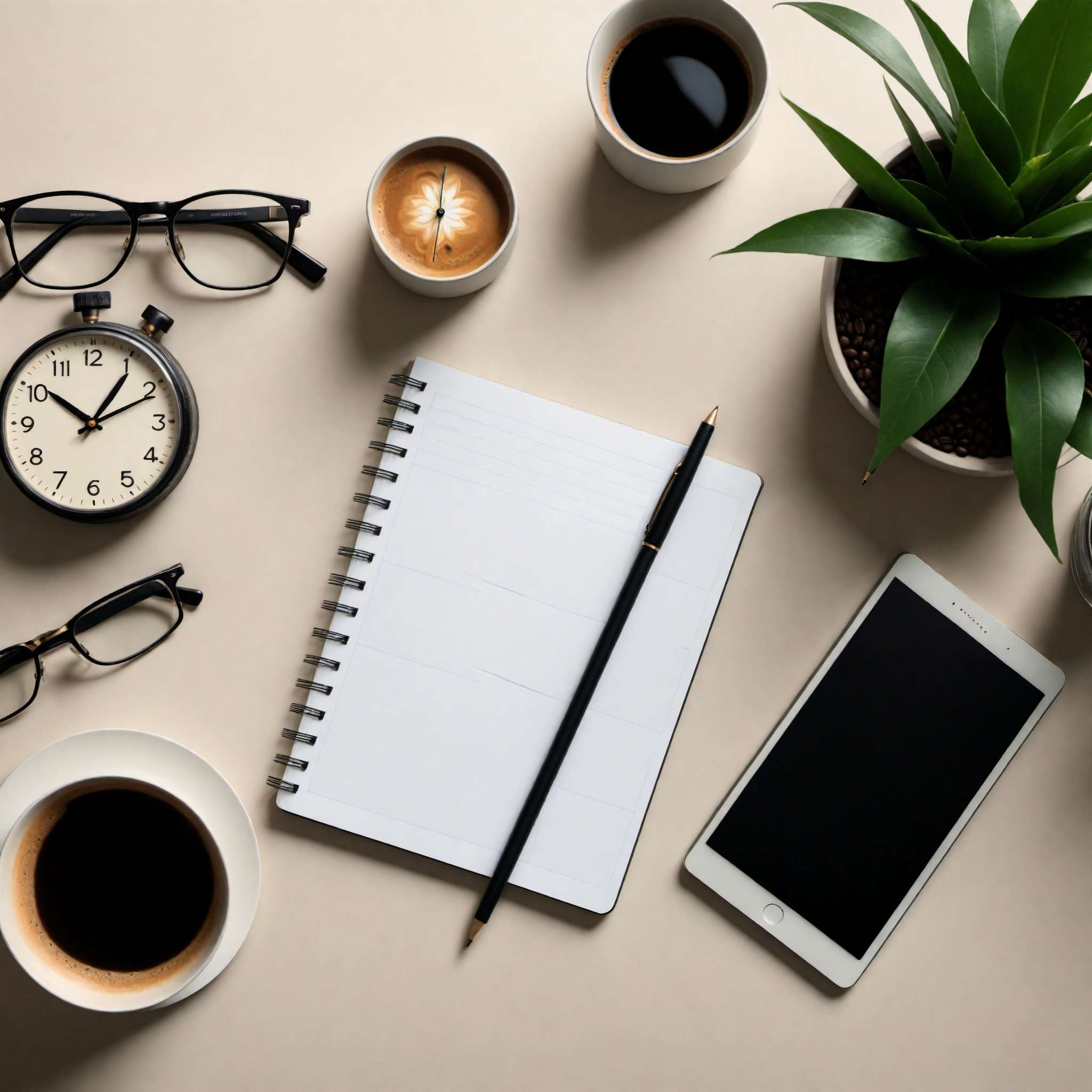
© Copyright , ZombieBunny.Org
Developing effective minimalist work habits
Developing effective minimalist work habits is key to becoming a minimalist worker. These habits are designed to simplify your work, enhance your productivity, and improve your work-life balance. Here are some minimalist work habits you can adopt.
Firstly, prioritize your tasks. Not all tasks are created equal. Identify the tasks that have the most significant impact on your work and focus on those. This helps you achieve more with less effort, a core principle of minimalism.
Secondly, limit your multitasking. Despite popular belief, multitasking can harm your productivity. Instead, adopt a single-tasking approach. Focus on one task at a time, complete it to the best of your ability, and then move on to the next task.
Thirdly, create a distraction-free work environment. This includes decluttering your workspace, turning off unnecessary notifications, and creating boundaries to prevent work interruptions.
Fourthly, take regular breaks. Work in short, focused bursts, followed by short breaks. This approach, known as the Pomodoro Technique, can enhance your focus and productivity.
Lastly, make time for reflection. Regularly review your work habits, identify areas for improvement, and make necessary adjustments. This helps you stay on track and continuously improve your work habits.
By adopting these minimalist work habits, you can streamline your work, boost your productivity, and create a more balanced work life. It’s a journey towards working smarter, not harder, and achieving more with less.
How minimalist habits improve productivity
Minimalist work habits can significantly enhance your productivity by eliminating distractions, reducing stress, and optimizing your work process. By focusing on the essentials and eliminating unnecessary tasks, you can boost your efficiency and get more done in less time.
For instance, prioritizing tasks allows you to focus on high-impact tasks that contribute the most to your work. This means you’re spending your time and energy on tasks that matter, enhancing your productivity. Similarly, single-tasking, as opposed to multitasking, allows you to devote your full attention to one task at a time, resulting in high-quality work done in less time.
Creating a distraction-free work environment, another minimalist habit, minimizes interruptions, enabling you to work more efficiently. A clutter-free, serene workspace promotes focus and reduces stress, both of which are crucial for productivity.
Moreover, taking regular breaks can actually improve productivity. It prevents burnout, refreshes your mind, and maintains a high level of focus when you’re working.
Lastly, regular reflection on your work habits helps you identify productivity roadblocks and make necessary adjustments. It ensures that your work habits continue to support your productivity and work-life balance.
In essence, minimalist work habits are about working smarter, not harder. They promote efficiency, reduce stress, and create a conducive environment for productivity, paving the way for a balanced and fulfilling work life.
Maintaining consistency with minimalist work habits
Maintaining consistency with minimalist work habits is essential for reaping their full benefits. It’s not just about adopting these habits, but about making them a part of your daily work routine. Here are some tips to help you maintain consistency with your minimalist work habits.
Firstly, start small. Don’t try to overhaul your entire work routine at once. Instead, start with one or two minimalist habits, and once they become a part of your routine, gradually introduce more.
Secondly, create a routine. Incorporate your minimalist work habits into a daily or weekly routine. This helps create a structure for your workday and makes it easier to stick to your habits.
Thirdly, set clear goals. Whether it’s decluttering your workspace, focusing on one task at a time, or taking regular breaks, set clear, achievable goals for your minimalist work habits. This gives you a target to aim for and helps keep you motivated.
Fourthly, hold yourself accountable. Regularly review your progress, identify any roadblocks, and make necessary adjustments. This helps ensure that your minimalist work habits continue to support your productivity and work-life balance.
Finally, be patient with yourself. Changing work habits takes time. Don’t be discouraged by setbacks. Instead, see them as opportunities to learn and improve.
By maintaining consistency with your minimalist work habits, you can enhance your productivity, reduce stress, and achieve a balanced work life. It’s a journey towards working smarter, not harder, and achieving more with less.
The Role of Technology in Minimalist Work Life
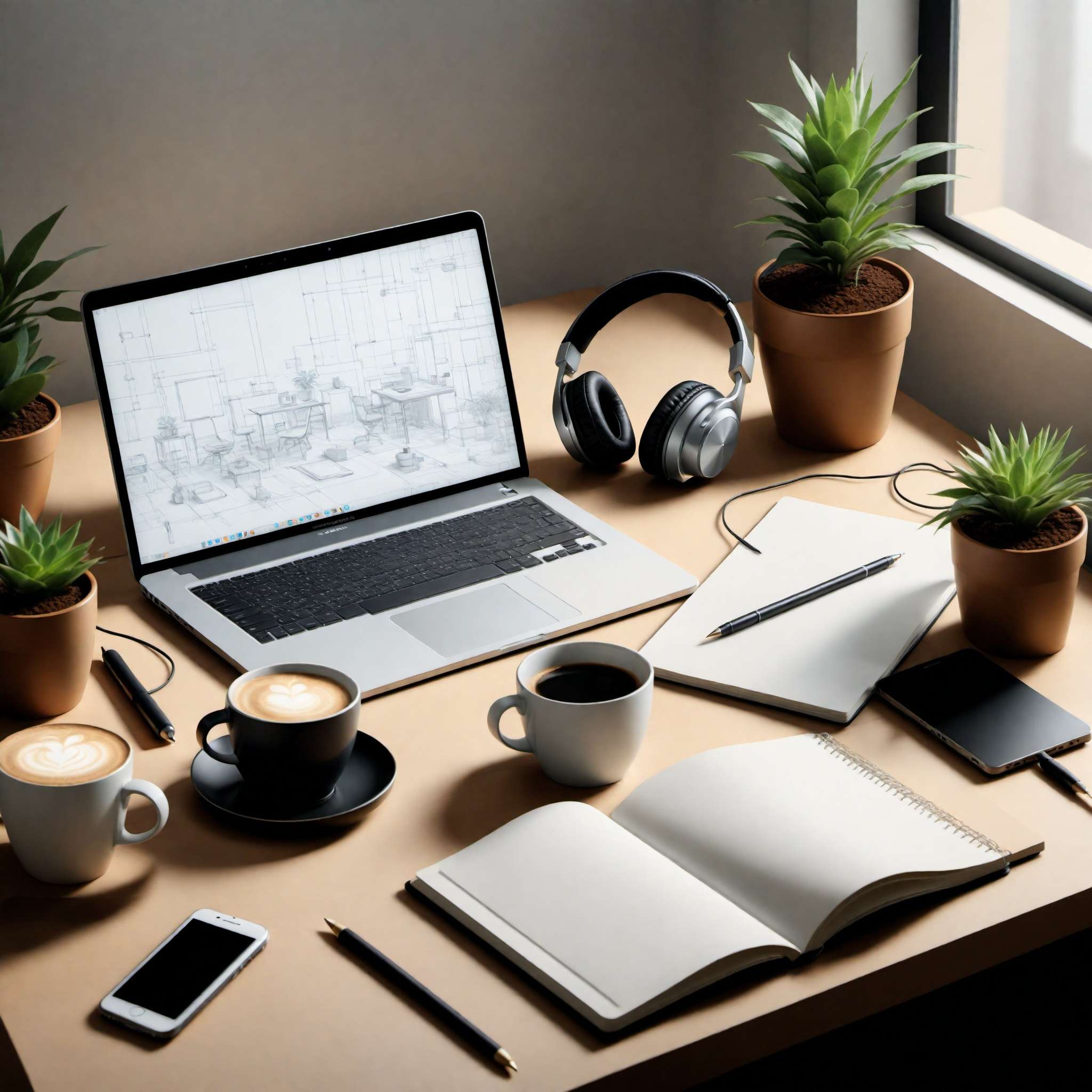
© Copyright , ZombieBunny.Org
Incorporating technology into minimalist work
Incorporating technology into minimalist work can greatly enhance your productivity and efficiency. With the right tools, you can streamline your tasks, automate repetitive processes, and create a more organized, clutter-free digital workspace.
To start with, use productivity apps to manage your tasks, schedule your day, and keep track of your deadlines. Tools like Trello, Asana, or Google Calendar can help you prioritize your tasks, stay organized, and manage your time effectively.
Next, consider using note-taking apps like Evernote or OneNote to capture ideas, jot down notes, and organize information. These tools can help you keep your thoughts and ideas in one place, reducing mental clutter.
Furthermore, use cloud storage services like Google Drive or Dropbox to store your files. This not only saves physical space but also allows you to access your files from anywhere, enhancing your flexibility and efficiency.
Lastly, consider using digital decluttering tools to clean up your digital space. This includes tools to unsubscribe from unwanted emails, clean up your desktop, or organize your digital files.
Remember, the key to incorporating technology into minimalist work is to use it mindfully. Choose tools that truly add value to your work, and avoid unnecessary digital clutter. With the right use of technology, you can boost your productivity, save time, and embrace a more balanced, minimalist work life.
Digital tools for a minimalist workspace
Digital tools can significantly enhance your minimalist work life by streamlining tasks, reducing clutter, and improving productivity. Here are some tools that can transform your workspace into a minimalist haven.
Task management apps like Trello or Asana can help organize your tasks, set priorities, and keep track of your progress. These tools provide a visual overview of your tasks, making it easy to see what needs to be done and when.
Note-taking apps like Evernote or OneNote allow you to jot down ideas, take notes, and organize information in one place. They reduce the need for physical notebooks, contributing to a clutter-free workspace.
Cloud storage services like Google Drive or Dropbox eliminate the need for physical file storage. They allow you to store, access, and share files from anywhere, making your work more flexible and efficient.
Email management tools like Unroll.Me can help you declutter your inbox by unsubscribing from unwanted emails in a few clicks. Similarly, file organization tools like DropIt can automatically organize your files based on pre-set rules, keeping your digital workspace clutter-free.
To maintain a distraction-free digital environment, consider using website blockers like StayFocused or Freedom to block distracting websites during work hours.
Remember, the goal is not to use all these tools, but to choose the ones that best suit your needs and contribute to your minimalist work life. By incorporating these digital tools, you can enhance your productivity, reduce digital clutter, and create a conducive work environment.
The synergy of minimalism and technology
Minimalism and technology may seem like opposites at first glance, but when used mindfully, they can work together to create a balanced, efficient, and productive work life. The synergy of minimalism and technology lies in their shared goal – to simplify, optimize, and enhance.
Minimalism, with its emphasis on simplicity and focus, can guide how we use technology. It encourages us to choose tools that truly add value to our work, avoid digital clutter, and use technology in a purposeful and efficient manner. Instead of being overwhelmed by a myriad of apps and digital tools, the minimalist worker selects only those that streamline their workflow, reduce distractions, and support their productivity.
On the other hand, technology can support minimalism by providing tools that streamline tasks, automate repetitive processes, and create a clutter-free digital workspace. From task management apps and note-taking tools to cloud storage services and digital decluttering tools, technology offers a plethora of resources to support a minimalist work life.
The key to creating this synergy lies in mindful usage. It’s about using technology in a way that aligns with your minimalist principles, supports your productivity, and contributes to a balanced work life. With the right approach, minimalism and technology can work together to enhance your work experience, streamline your tasks, and create a conducive work environment.
The Minimalist Mindset: Mental Clarity and Focus

© Copyright , ZombieBunny.Org
Cultivating a minimalist mindset for work
Cultivating a minimalist mindset for work is about more than just decluttering your workspace or streamlining your tasks. It’s about adopting a new way of thinking about work, one that emphasizes simplicity, focus, and value.
Start by reevaluating your work habits. Identify the tasks that truly add value to your work and focus on those. Eliminate or delegate tasks that don’t contribute significantly to your goals. This allows you to focus on high-impact tasks and get more done with less effort.
Next, embrace the concept of “less is more.” Resist the urge to multitask or fill every moment of your day with work. Instead, focus on one task at a time and give it your full attention. This not only improves the quality of your work but also reduces stress and boosts your efficiency.
Moreover, cultivate a mindset of contentment and sufficiency. Resist the urge to constantly chase after more – more tasks, more projects, more responsibilities. Instead, appreciate what you have and realize that you have enough.
Finally, make time for reflection and mindfulness. Regularly review your work habits, celebrate your achievements, and make necessary adjustments. Mindfulness helps you stay focused, reduces stress, and contributes to a balanced work life.
By cultivating a minimalist mindset, you can enhance your productivity, achieve a better work-life balance, and create a more fulfilling work life. It’s a journey towards working smarter, not harder, and achieving more with less.
The role of mental clarity in productivity
Mental clarity plays a significant role in enhancing productivity. When your mind is clear and focused, you’re able to concentrate better, make better decisions, and work more efficiently. For the minimalist worker, achieving mental clarity is a key part of their productivity strategy.
One way to achieve mental clarity is by reducing mental clutter. This involves eliminating unnecessary tasks, focusing on one task at a time, and decluttering your workspace. A clear, organized workspace reflects a clear, organized mind, reducing distractions and enhancing focus.
Another aspect of mental clarity is mindfulness. By being present in the moment, you’re able to focus fully on the task at hand, enhancing your efficiency and the quality of your work. Techniques like meditation, journaling, or simply taking a few deep breaths can help you cultivate mindfulness.
Moreover, mental clarity involves setting clear, achievable goals. When you know exactly what you need to achieve, you can direct your focus and efforts towards these goals, enhancing your productivity.
Finally, mental clarity involves taking care of your mental health. Regular breaks, adequate sleep, and a balanced diet all contribute to mental clarity, reducing stress and enhancing productivity.
In essence, mental clarity is about creating a conducive mental environment for productivity. It’s about decluttering your mind, focusing on what matters, and taking care of your mental health, paving the way for a more productive and balanced work life.
Maintaining focus in a minimalist work environment
Maintaining focus in a minimalist work environment involves creating a conducive physical and mental space for productivity. A minimalist work environment, free from unnecessary clutter and distractions, naturally promotes focus. However, maintaining this focus requires discipline, mindfulness, and the right work habits.
Start by creating a distraction-free workspace. This includes decluttering your desk, turning off unnecessary notifications, and creating boundaries to prevent interruptions. Each of these steps contributes to a work environment that promotes focus and minimizes distractions.
Adopting a single-tasking approach can also help maintain focus. By focusing on one task at a time, you’re able to devote your full attention to that task, enhancing your efficiency and the quality of your work.
Furthermore, taking regular breaks can actually improve focus. Working for extended periods can lead to mental fatigue and reduced focus. Taking short breaks, on the other hand, can refresh your mind and maintain a high level of focus.
Finally, mindfulness techniques such as meditation or deep breathing can help improve focus. These techniques help calm the mind, reduce stress, and enhance mental clarity, allowing you to maintain focus even in demanding work situations.
By cultivating these habits, you can maintain focus in a minimalist work environment, enhancing your productivity and achieving a balanced work life. It’s about working smarter, not harder, and achieving more with less.
Minimalism and Work-Life Balance
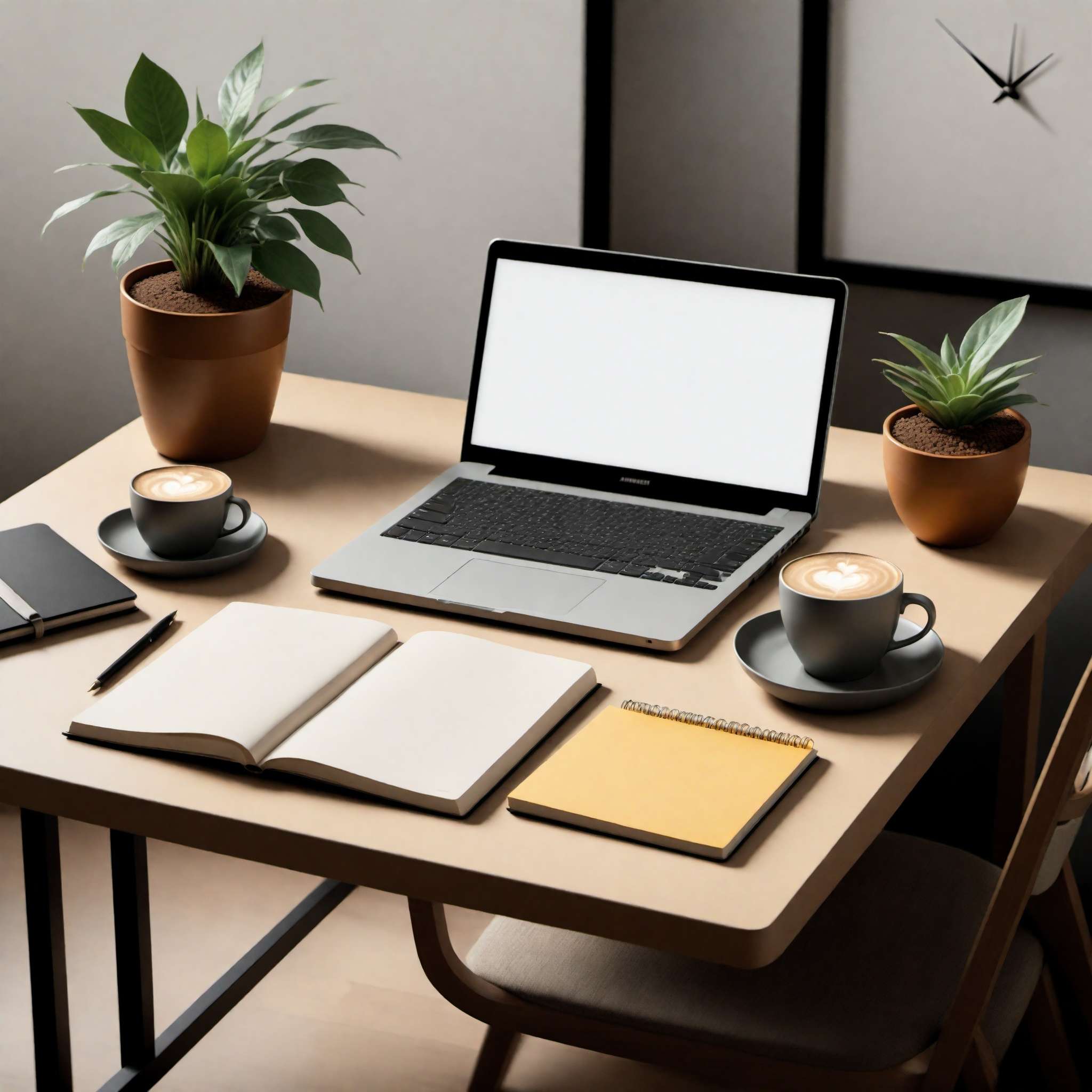
© Copyright , ZombieBunny.Org
Achieving work-life balance through minimalism
Achieving work-life balance is one of the key benefits of embracing minimalism at work. A minimalist worker, by focusing on what’s truly important and eliminating the unnecessary, can create a work environment that not only enhances productivity but also promotes a balanced lifestyle.
One way minimalism contributes to work-life balance is by promoting efficiency. By prioritizing tasks, focusing on one task at a time, and eliminating unnecessary tasks, you’re able to get more done in less time. This leaves more time for rest, relaxation, and personal pursuits.
Minimalism also reduces stress and anxiety, both of which can disrupt work-life balance. A clutter-free, organized workspace promotes a sense of calm and control, reducing stress and enhancing productivity. Similarly, a minimalist mindset helps reduce mental clutter, promoting mental clarity and reducing anxiety.
Moreover, minimalism encourages mindfulness, which is key to work-life balance. Being present in the moment, whether you’re working or relaxing, helps you fully engage in the activity and derive more satisfaction from it.
Finally, minimalism promotes contentment. By focusing on what you have instead of constantly chasing after more, you can achieve a sense of fulfillment and balance in your work and personal life.
In essence, minimalism is about more than just decluttering your workspace or simplifying your tasks. It’s a mindset and a lifestyle that promotes efficiency, reduces stress, and leads to a more balanced and fulfilling work life.
The impact of minimalism on job satisfaction
Minimalism can have a significant impact on job satisfaction. By simplifying your work, reducing stress, and promoting a balanced work life, minimalism can enhance your job satisfaction and overall well-being.
A minimalist work environment, free from unnecessary clutter, promotes focus and productivity. You’re able to accomplish tasks more efficiently and produce higher quality work, leading to a sense of achievement and satisfaction.
Minimalism also reduces work-related stress. By prioritizing tasks and focusing on one task at a time, you’re able to manage your workload more effectively, reducing stress and enhancing job satisfaction. Moreover, a clutter-free workspace promotes a sense of calm and control, further reducing stress.
Furthermore, minimalism encourages work-life balance, a key factor in job satisfaction. By working more efficiently and making time for rest and personal pursuits, you’re able to achieve a balanced lifestyle, leading to higher job satisfaction.
Finally, the mindfulness and contentment promoted by minimalism can enhance job satisfaction. Being present in the moment allows you to fully engage in your work, deriving more satisfaction from it. Similarly, by focusing on what you have instead of chasing after more, you can achieve a sense of fulfillment and contentment in your work.
In essence, minimalism is a powerful tool for enhancing job satisfaction. It’s about working smarter, not harder, and achieving a balanced and fulfilling work life.
Reducing work-related stress with minimalist principles
Reducing work-related stress is one of the significant benefits of adopting minimalist principles at work. These principles, centered around simplicity, focus, and value, can help create a work environment that reduces stress and promotes well-being.
Firstly, decluttering your workspace reduces physical clutter, which can be a source of stress. A clean, organized workspace promotes a sense of calm and control, enhancing your focus and productivity.
Secondly, prioritizing tasks reduces mental clutter. By focusing on high-impact tasks and eliminating unnecessary ones, you can manage your workload more effectively, reducing stress and enhancing job satisfaction.
Thirdly, single-tasking, as opposed to multitasking, can significantly reduce stress. Focusing on one task at a time allows you to devote your full attention to that task, reducing the stress of juggling multiple tasks and enhancing the quality of your work.
Furthermore, taking regular breaks can help prevent burnout, a common source of work-related stress. Short breaks refresh your mind, maintaining a high level of focus and reducing stress.
Finally, cultivating a minimalist mindset helps reduce stress. This involves being present in the moment, appreciating what you have, and resisting the urge to constantly chase after more. This sense of contentment and sufficiency can significantly reduce stress and enhance job satisfaction.
In essence, minimalist principles provide a roadmap for reducing work-related stress. They promote a balanced, efficient, and stress-free work life, leading to higher job satisfaction and overall well-being.
Case Studies: Successful Minimalist Workers
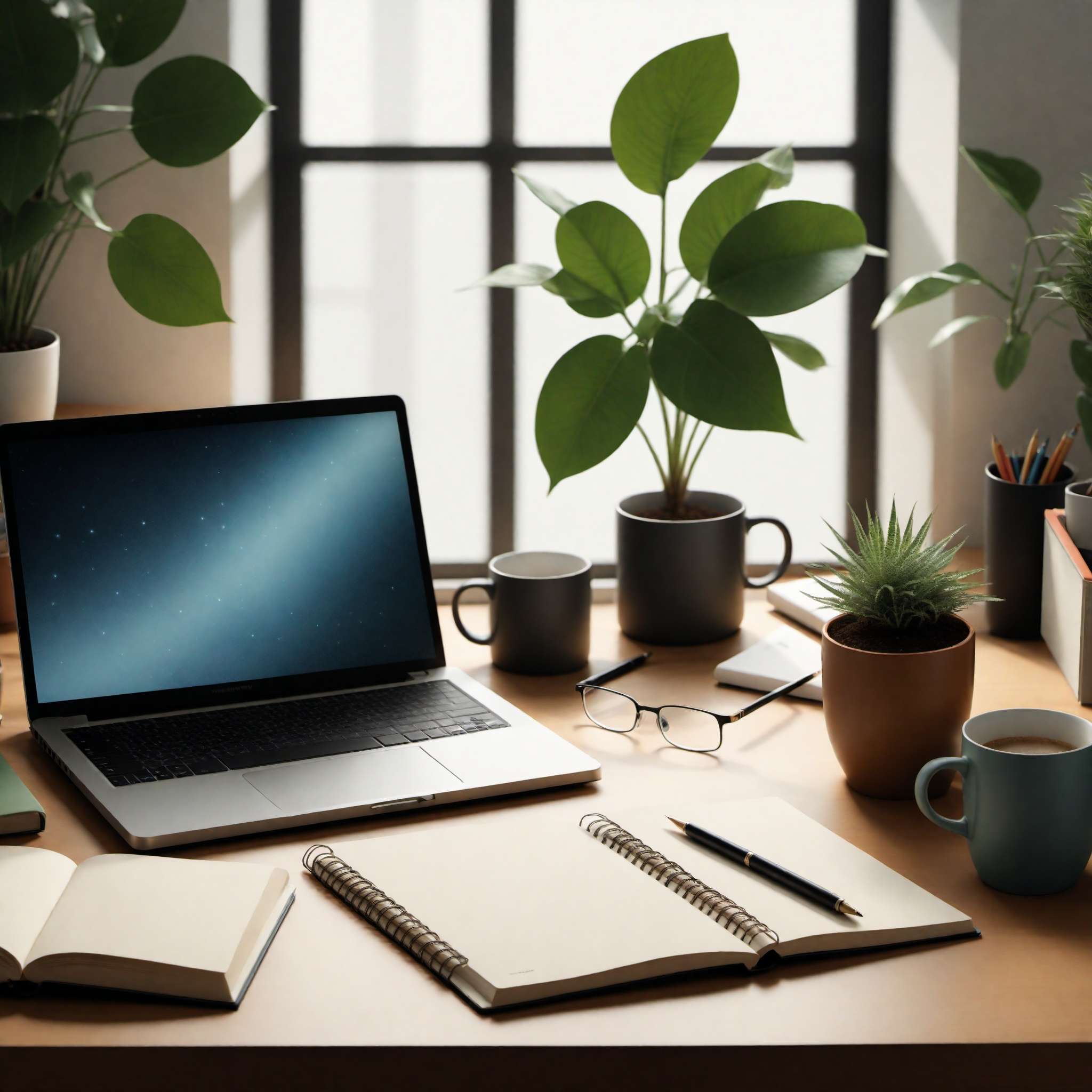
© Copyright , ZombieBunny.Org
Case study 1: A tech entrepreneur
Let’s take a look at John, a successful tech entrepreneur who attributes much of his success to adopting minimalist principles at work. John runs a thriving tech startup, and like many entrepreneurs, he used to grapple with a heavy workload, constant stress, and a blurred work-life boundary.
Realizing the need for a change, John decided to adopt a minimalist approach at work. He started by decluttering his workspace, eliminating physical clutter that was distracting and stress-inducing. He adopted digital tools like Asana for task management and Google Drive for cloud storage, which helped streamline his tasks and create a clutter-free digital workspace.
John also revamped his work habits, focusing on high-impact tasks and adopting a single-tasking approach. He used tools like StayFocused to create a distraction-free digital environment and incorporated regular breaks into his work routine.
Moreover, John made an effort to cultivate a minimalist mindset. He practiced mindfulness, made time for reflection, and embraced a sense of sufficiency and contentment. This reduced stress, improved his mental clarity, and enhanced his job satisfaction.
As a result of adopting these minimalist principles, John noticed a considerable improvement in his productivity and work-life balance. He was able to manage his workload more effectively, reduce work-related stress, and make time for his personal life. His story illustrates the power of minimalism in creating a balanced, fulfilling work life.
Case study 2: A creative freelancer
Now, let’s examine the story of Lisa, a creative freelancer who embraced minimalism to enhance her productivity and work-life balance. As a freelancer juggling multiple clients and projects, Lisa often found herself overwhelmed and stressed, with little time left for personal pursuits.
To address these issues, Lisa decided to adopt minimalist principles at work. She started by decluttering her workspace, getting rid of unnecessary items that were causing distractions. She also digitized most of her work, using tools like Evernote for note-taking and Dropbox for file storage, creating a clutter-free digital environment.
Lisa also revamped her work habits. She started prioritizing tasks based on their importance and impact, focusing on one project at a time. She also incorporated regular breaks into her work routine, using the Pomodoro Technique to work in short, focused bursts.
Moreover, Lisa cultivated a minimalist mindset. She practiced mindfulness, being fully present in whatever task she was working on. She also adopted a mindset of contentment, resisting the urge to take on more projects than she could handle.
By adopting these minimalist principles, Lisa was able to significantly improve her productivity and work-life balance. She managed to reduce her work-related stress, deliver high-quality work to her clients, and make time for rest and personal pursuits. Lisa’s story serves as inspiration for freelancers and other workers looking to embrace minimalism for a more balanced, fulfilling work life.
Case study 3: A corporate executive
Let’s take a look at the story of Emily, a corporate executive who successfully implemented minimalist principles in her work life. As an executive, Emily was constantly juggling numerous responsibilities and tasks, leading to high levels of stress and a lack of work-life balance.
Emily decided to adopt a minimalist approach at work. She started by decluttering her workspace and creating a clean, organized environment that promoted focus and productivity. She also utilized productivity tools like Google Calendar and Asana to manage her tasks and deadlines, creating a streamlined and efficient work process.
Emily also adopted a single-tasking approach, tackling one task at a time with her full attention. This not only improved the quality of her work but also reduced the stress of multitasking. She also incorporated regular breaks into her workday to prevent burnout and maintain focus.
Moreover, Emily cultivated a minimalist mindset, focusing on what was truly important and eliminating unnecessary tasks and responsibilities. She practiced mindfulness, taking the time to be fully present in whatever she was doing, and learned to appreciate what she had instead of constantly striving for more.
As a result of adopting minimalist principles, Emily was able to significantly reduce her work-related stress, improve her productivity, and achieve a better work-life balance. Her story demonstrates the power of minimalism in enhancing job satisfaction, reducing stress, and creating a more balanced and fulfilling work life.
Conclusion: The Journey to Becoming a Minimalist Worker
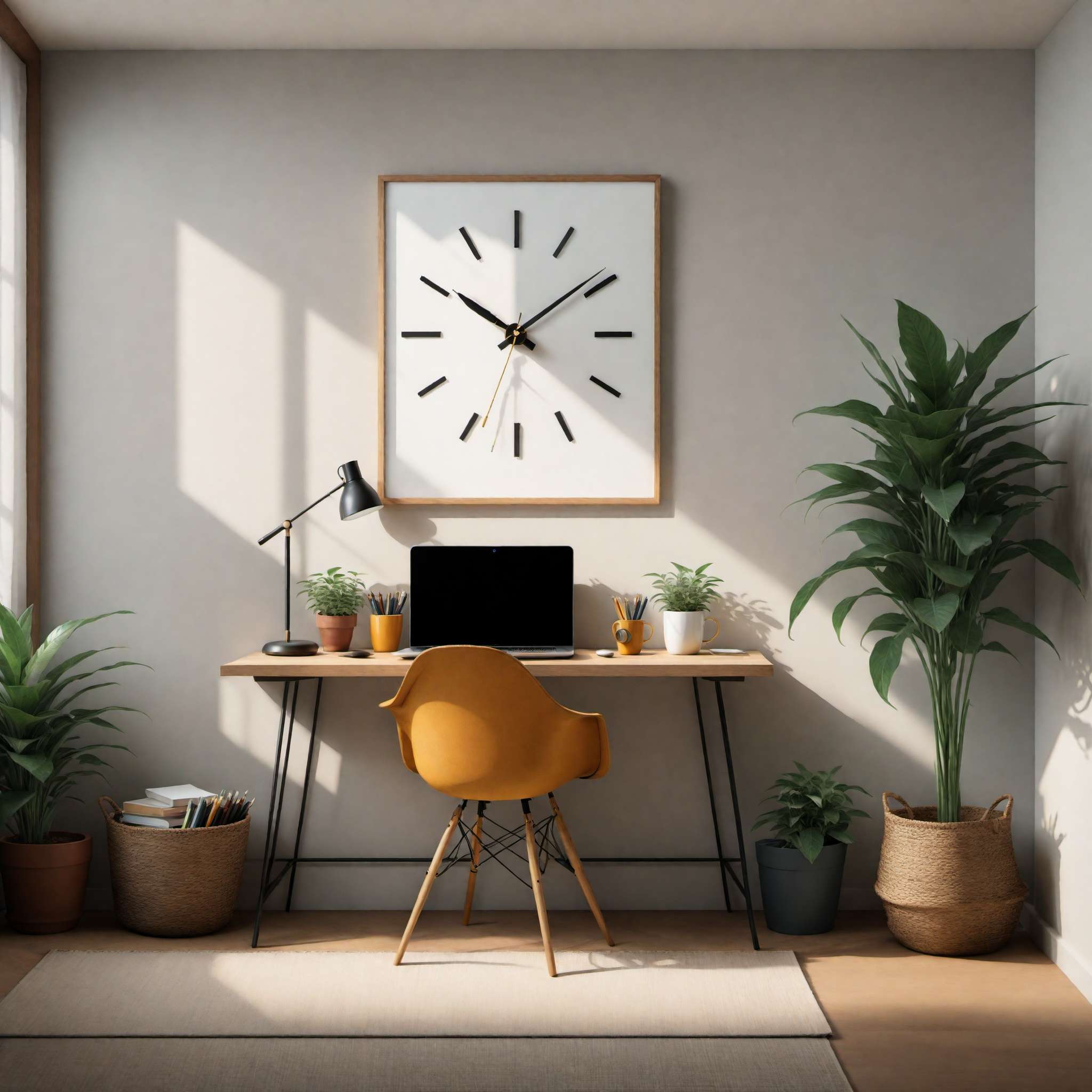
© Copyright , ZombieBunny.Org
Summary of the blog post
Throughout this blog post, we’ve explored the concept of the minimalist worker – a professional who embraces simplicity, focus, and value in their work life. We’ve delved into the principles of minimalism at work, discussing how they can enhance productivity, reduce stress, and promote a balanced work life.
We’ve seen how adopting minimalist work habits such as prioritizing tasks, single-tasking, creating a distraction-free work environment, taking regular breaks, and reflecting on work habits can boost efficiency and productivity. We’ve also explored the role of technology in minimalist work life, discussing how digital tools can streamline tasks, create a clutter-free digital environment, and contribute to a minimalist work life.
We’ve discussed the importance of cultivating a minimalist mindset, focusing on mental clarity and focus, and how this can enhance job satisfaction and contribute to a balanced work life. We’ve also looked at the impact of minimalism on work-life balance and job satisfaction, discussing how it can reduce work-related stress and enhance overall well-being.
Finally, we’ve shared the stories of successful minimalist workers from various fields, demonstrating the power of minimalism in enhancing productivity, reducing stress, and promoting a balanced work life.
In essence, becoming a minimalist worker is about working smarter, not harder. It’s a journey towards simplicity, focus, and value in work life – a journey that can lead to greater productivity, less stress, and a more fulfilling and balanced work life.
The path to becoming a minimalist worker
Becoming a minimalist worker is a journey towards simplicity, focus, and value in your work life. It’s about working smarter, not harder, and achieving more with less. Here are some steps you can take on your journey to becoming a minimalist worker.
Start by decluttering your workspace. Create a clean, organized environment that promotes focus and productivity. Use digital tools to streamline your tasks, manage your time, and create a clutter-free digital workspace.
Next, revamp your work habits. Prioritize tasks based on their impact and focus on one task at a time. Take regular breaks to prevent burnout and maintain your focus. Incorporate mindfulness techniques into your work routine to enhance your focus and mental clarity.
Moreover, cultivate a minimalist mindset. Be present in the moment, focus on what’s truly important, and resist the urge to constantly chase after more. Practice contentment and sufficiency, realizing that you have enough.
Finally, make an effort to maintain a balanced work life. Manage your workload effectively, take time for rest and personal pursuits, and take care of your mental health.
Remember, becoming a minimalist worker is a journey, not a destination. It’s about continuously striving for simplicity, focus, and value in your work life, and embracing the benefits of minimalism – enhanced productivity, reduced stress, and a balanced, fulfilling work life.
Final thoughts on minimalist work life
Embracing a minimalist work life is a transformative journey that can significantly enhance your productivity, reduce stress, and promote a balanced work life. By focusing on what’s truly important, eliminating the unnecessary, and adopting efficient work habits, you can create a work environment that is conducive to focus, productivity, and well-being.
Minimalist principles can be implemented in various aspects of your work life, from decluttering your workspace and streamlining your tasks, to cultivating mental clarity and maintaining focus. Utilizing technology mindfully can also support your minimalist work life, helping you to automate tasks, manage time effectively, and create a clutter-free digital environment.
Cultivating a minimalist mindset is equally crucial. This involves being present in the moment, focusing on what’s truly important, and resisting the urge to constantly chase after more. It’s about achieving contentment and sufficiency, realizing that you have enough.
The journey to becoming a minimalist worker is about continuous improvement and mindful choices. It’s a commitment to work smarter, not harder, and to achieve more with less. And as we’ve seen from the case studies of successful minimalist workers, the benefits of this journey are immense, leading to enhanced productivity, reduced stress, and a more balanced and fulfilling work life. Embrace minimalism in your work life and experience the transformative power of simplicity, focus, and value.
Please support our site and purchase something from our store.




